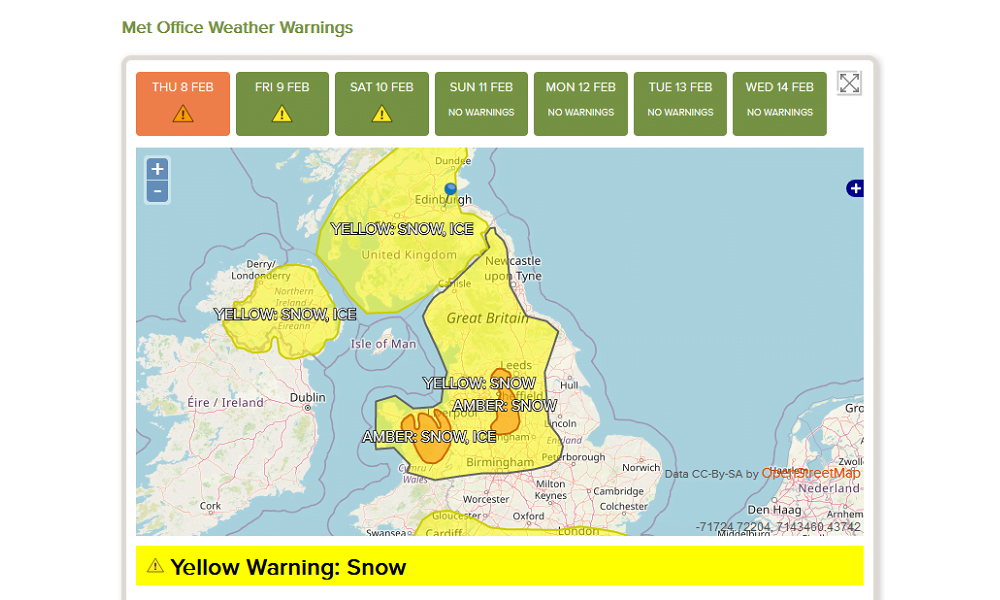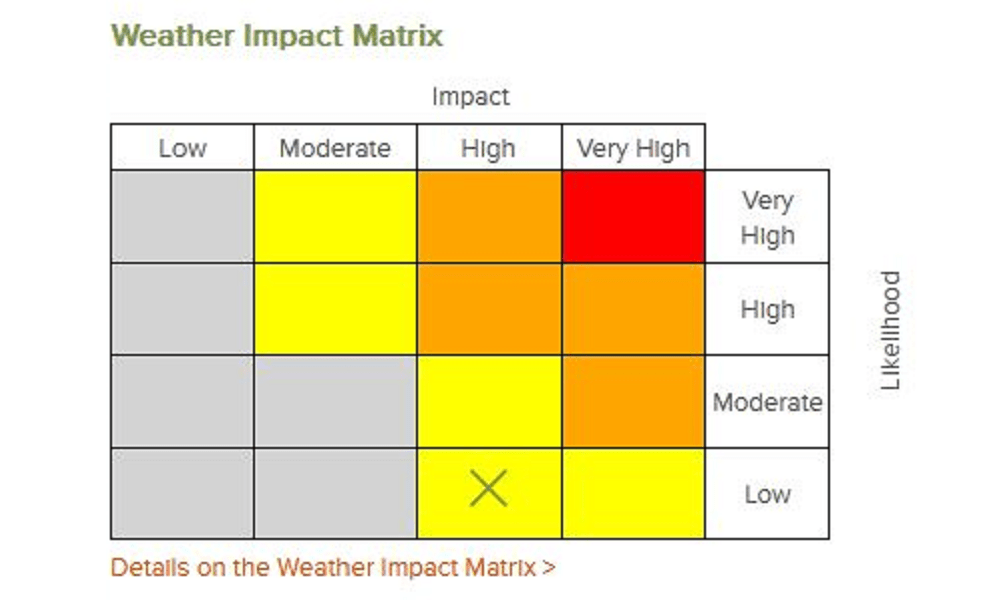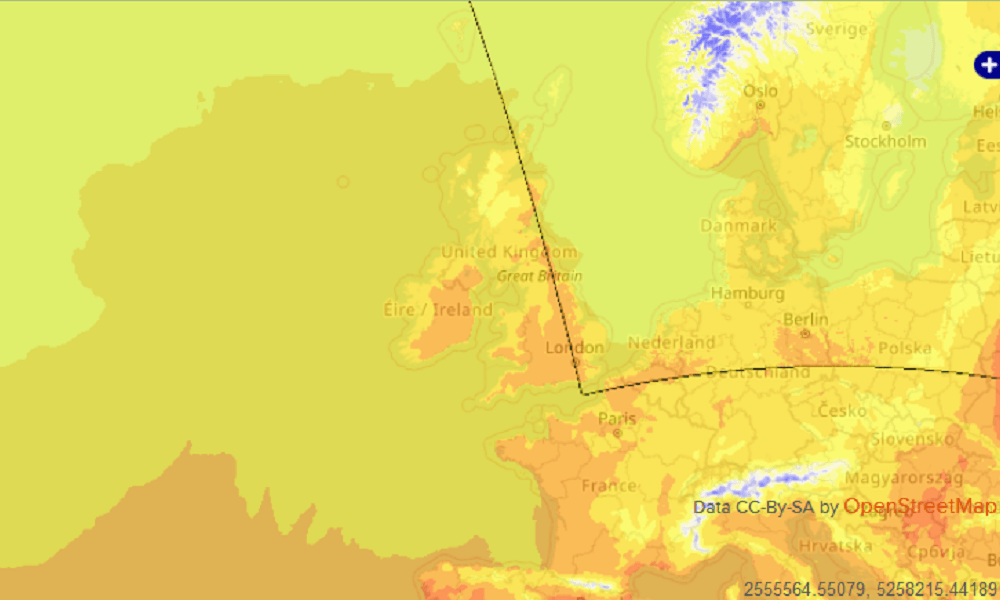Severe Weather Warnings and Environmental mapping
We specialise in outdoor lone worker protection and provide a Met Office Weather Warning Service and Environmental Maps Service to help you keep your lone workers safe.
Our Met Office Weather Warnings service complements our real-time Environmental mapping service. Available to Trackplot customers these services can be accessed 24/7 on the Trackplot Portal. This UK-wide data helps you assess the current and forthcoming weather conditions you or your lone workers may find themselves in. You can use the information to:
- Plan and schedule work according to your location and the local conditions
- Review or cancel schedules which may put lives or property at risk
- In the event of an “Overdue”, “Assistance Required” or “SOS” incident:
- Anticipate the type of accident that may have occurred
- Assess lone worker vulnerability
- Inform how you implement your Escalation Procedures
FORTHCOMING WEATHER
Severe Weather Warnings service
Provides advance notice of forthcoming severe weather to minimise the loss of life and damage to property and infrastructure.
-
8 weather types
Rain, Thunderstorm, Wind, Snow, Lightning, Ice, Extreme Heat and Fog
-
Forecast up to seven days ahead of the expected severe weather
-
A clear description of the expected weather
-
A clear description of the potential impacts the weather may cause
e.g. travel delays or cancellations, power cuts, mobile phone coverage disruption, potential for injuries
-
Weather Impact Matrix
Yellow, Amber or Red to indicate the level of impacts that may occur and the likelihood of those impacts occurring
-
Updates when the forecast is changing
-
Advice on what to do in severe weather
-
Which locations will be affected
In collaboration with the Met Office we provide our customers with weather warnings forecast up to 7 days ahead of the expected severe weather. Warnings can be issued for any one of eight different weather types.

Yellow Severe Weather Warning in Trackplot Portal.
Weather warnings are issued when the weather may be severe enough in nature to disrupt routines.
The geographical areas affected are coloured to indicate the warning severity, for example either a Yellow, Amber or Red Weather Warning, along with the specific weather type forecasted.

Consistent information is vital to minimise confusion and drive action to minimise the impacts of severe weather.
How to use the data
You can use this data to manage your business and lone workers, for example, hospital and ambulance services use weather information for the anticipation of different types of accidents such as:
- air pressure is linked to the number of heart attacks
- frosty weather to the number of slips, trips and falls resulting in hip replacements.
As a result, they can forecast the demand for ambulances and hospitals.
What are Met Office Weather Warnings
The National Severe Weather Warning Service (NSWWS), which delivers Met Office Weather Warnings, was established in 1988 as a result of the widespread impacts experienced during the Great Storm of October 1987. Following the introduction of the Civil Contingencies Act (2004) and consultation with emergency responders and members of the public, NSWWS developed to become a warning service based on the impact of the weather rather than a threshold of the weather itself.
The Met Office is recognised by UK government as the national weather warning service for the UK. The Met Office issues weather warnings to warn the public and emergency responders of impacts associated with severe or hazardous weather, which have the potential to cause disruption, damage to infrastructure or a danger to life.

Powered by Met Office data
CURRENT WEATHER
Environmental mapping service
The Trackplot Portal is integrated with a comprehensive series of real-time Environmental maps to help you assess the risks of weather conditions and environmental hazards:
-
Rain forecast
-
Temperature forecast
-
Wind forecast
-
Rapidly Developing Thunderstorms
-
Fire Weather Index
-
Active fires
These Environmental maps overlay the Ordnance Survey mapping in the Trackplot Portal so you can determine the risks to lone workers of oncoming weather. Especially useful to assess lone worker vulnerability if there is an Overdue, Assistance Required or SOS incident.

Temperature Forecast overlay in Trackplot Portal.
You can also use the maps to plan and schedule work according to your location and the local conditions.
How to use Trackplot’s environmental maps to assess risks
Environmental data sources
Trackplot’s Environmental data is collated from various sources including Norwegian Meteorological Institute, Norwegian Broadcasting Corporation, European Organisation for the Exploitation of Meteorological Satellites (EUMETSAT), European Forest Fire Information System.
Published online by Forestry Journal
